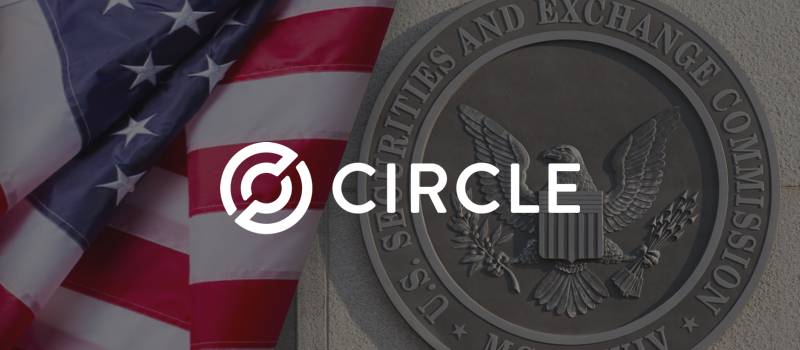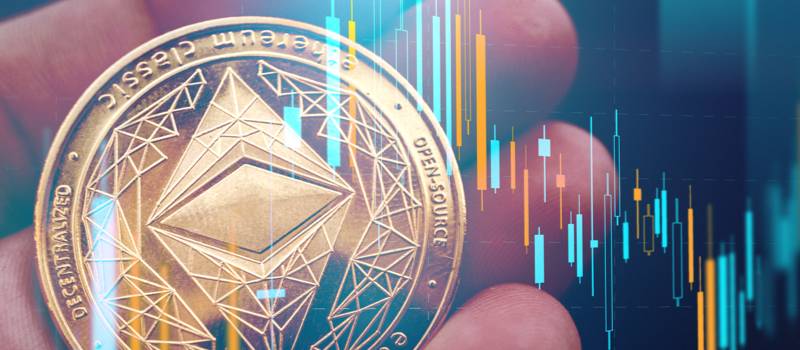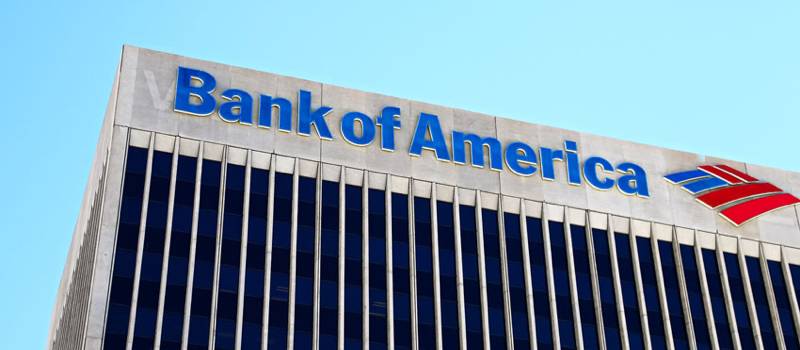Early last week, citing data from analytics company Glassnode, popular crypto strategic commentator Will Clemente outlined the significant trend change of long-term holders, along with their behavior towards the #1 cryptocurrency. The Bitcoin Long-Term Holder Supply Shock Ratio has gone into its highest territory in years, and historic comparisons reveal that this could mean that the price of the cryptocurrency could soon head upwards once more. This coincides with numerous previous reports which claim that such investors, who are typically regarded as those who refuse to sell their coins for one year or more, have retained their BTC portions even in times of peak volatility. The metric itself – Long-Term Holder Supply Shock – essentially considers the coins that have not moved in a long time. Consequently, they are considered unavailable compared to the tokens that were recently transferred and are regarded as having availability.
The LTH Supply Shock Ratio has skyrocketed since the middle of this year and is currently at records levels. Clemente described this as a widely bullish signal that has historically served as the catalyst for bull runs. “Each time the metric has reached the upper bound of the highlighted green range, we’ve seen major price appreciation over the coming months,” he stated. The cryptocurrency community has never had a shortage of predictions where BTC’s price will be at the end of a particular year; however, it seems that the end of 2021, in particular, is gaining widespread attention. The number of people who have forecasted a $100,000 per coin price by December 31st includes the CEO of Chainalysis, Adam Back, Tom Lee, Anthony Scaramucci, analyst Kevin Wadsworth, and more. Interestingly, this is also the same price tag the popular stock-to-flow model envisions. By describing the stock in terms of size of existing reserves (stockpiles) versus the annual supply of bitcoins, the S2F and its variations see Bitcoin going well within a six-digit territory in the next few months. Even the creator’s worst-case scenario, which is more bearish than the S2F, predicts that BTC will eventually go above $100,000 in December this year.

The US SEC is investigating crypto firm Circle over USDC product
The United States Securities and Exchange Commission sent an “investigative subpoena” to the crypto payments company Circle. This was revealed by the crypto firm via a regulatory filing saying that it had received the subpoena from the enforcement division of the SEC in July. In the July subpoena, Circle had stated its plans to go public through a special-purpose acquisition vehicle, commonly known as SPAC. In their filing, they said that the SEC was requesting “documents and information regarding certain of our holdings, customer programs, and operations,” while also disclosing that “we are cooperating fully with their investigation.” A new regulatory filing by Circle on October 4 shows that the investigation is still underway. While the first announcement had gone largely unnoticed, the new revelation informs us just how far the comical and disrespectful SEC will go to regulate the “unregulated” crypto space.
The press statement issued at the time of the subpoena showed that Circle had been planning to offer a yield program for institutional investors domiciled in the US and Switzerland. Circle had revealed that the reserve of its stablecoin, USDC, was held mostly in cash and cash equivalents, while the remainder was being held in commercial paper accounts, treasuries, and bonds. The crypto firm had agreed to pay the SEC commissioner $10 million earlier in the year over its role as an unregistered crypto exchange for Poloniex. But the SEC, under Gary Gensler, has repeatedly revealed its intention to regulate the crypto space, the commission’s chairman, in one of his recent interviews, urged crypto exchanges to register at once. Recent occurrences and revelations point to how the SEC has been approaching the crypto industry: simply put, it seeks to bring them extremely firmly beneath the veil of a “public policy framework.”

Expert Predicts: Last Resistance Before Ethereum At $5K?
A year ago, the price action that preceded the end of the year took the market into new highs. During the past week, the bulls have taken over the crypto market with Bitcoin and Ethereum recording gains across the board, and now the expectations are similar, but experts are yet to find a consensus. In his most recent report for Bloomberg Intelligence, Senior Commodity Strategist Mike McGlone stated that the “biggest surprise” would be to not see higher prices for Bitcoin and Ethereum. The two main cryptocurrencies by market cap have been experiencing short-term bearish obstacles but with long-term bullish fundamentals. The crypto ban imposed by China had been one of the most prominent obstacles. McGlone expects $40,000 to become the new critical support for Bitcoin in the coming months. Conversely, Ethereum could move into the $2,000 to $3,000 support zone in case of any downside risk. Both cryptocurrencies have been increasing their price floors after May, June, and July brought in a high amount of selling pressure into the market. In particular, Ethereum has major price tailwinds in non-fungible tokens (NFT’s), fintech, Stablecoins, and decentralized finances (DeFi). Due to that, McGlone believes ETH’s price is still in its early days of price discovery, moving into excelled appreciation.
The introduction of EIP-1559 has added even another new bullish factor for the Ethereum chart. According to McGlone, “Demand and adoption are rising, but our graphic depicts a notable difference from a year ago — plunging supply. At the start of 4q20, the 12-month rate of change in the measure of Ethereum supply from mosaic was closer to 5%. Now it’s on track to drop toward 2% because of a recent upgrade.” It is due to its use cases that Ethereum has managed to attract major players and thus take over important market share. The second largest cryptocurrency by market cap is starting to look more like a leader. The digitalization of money and finances will continue to create demand for Ethereum. In the DeFi sector, the growth has been exponential, with the total value locked of these assets reaching $100 billion versus the $20 billion recorded in 2020. The report claims that investors without a position in the crypto market could be making a similar mistake as those who missed out on the early days of the internet.

Bitcoin Will Become Currency in Brazil Soon, According to Federal Deputy Aureo Ribeiro
Bitcoin may soon become a regulated currency for payments in Brazil, according to statements given by Aureo Ribeiro, a Brazilian federal deputy. Ribeiro stated last week that with the pending approval of Bill 2.303/15 to regulate cryptocurrencies, new uses would be open for crypto holders, such as buying houses, cars, and even food in restaurants like McDonald’s. These comments are the product of the approval of the so-called Brazilian “Bitcoin Law” for presentation in the Plenary of the Chamber of Deputies, after it had been stuck in development for years. Ribeiro stated that, by its innovative design, the law could offer wisdom to other countries wishing to regulate digital assets. Ribeiro stressed, “We debated a few years there to arrive at a text that recognizes this asset… which will be regulated by a government agency, because we will work with the central bank and the CVM, depending on how this asset will be recognized, such as real estate value or currency of daily use.”
Ribeiro was very positive about the effect this new law was expected to have in protecting citizens from Ponzi schemes in the sector. Brazilians have been especially hit hard with these scams, and authorities have had to act against the promoters of alleged Ponzi schemes on at least several occasions this year. Cryptocurrencies in Brazil are still a gray area, and authorities are limited in the scope of their ability to control these companies. Ribeiro stressed that with this law, the government wants to “separate the wheat from the chaff, create regulations so that you can trade, know where you are buying, know who you are dealing with.” In conclusion, the federal deputy said that the law project had support in the government, and it has also been discussed with Arthur Lira, president of the Chamber of Deputies. Ribeiro is of the firm belief that it is just a matter of time for the law to be approved.

MUCH OF WHAT YOU NEED TO KNOW
Bank of America released their latest crypto report late last week, with BofA strategists Alkesh Shah and Andrew Moss describing the crypto market as “too large to ignore” and that “there could be more opportunity than skeptics expect.” As Bitcoin returns north of $50K, perhaps it is a good time to review the key findings from the 140+ page report. Both the BofA, along with independent metrics covering Bitcoin inflows, reflect strong institutional interest. Additionally, beyond simply traditional financial institutions, Bank of America also cites the potential for further integration of blockchain technology in daily life. “In the near future, you may use blockchain technology to unlock your phone; buy a stock, house or fraction of a Ferrari; receive a dividend; borrow, loan or save money; or even pay for gas or pizza,” the report states. Of course, many different projects are already working on tools for some of these exact use cases, and a whole lot more. Outside of existing economies ripe for reinvigoration, the report also calls out projects and firms that are becoming inherently native to the digital asset ecosystem. One thing is abundantly clear: digital assets are on major corporate radars, and as BofA states – “corporations aren’t risking being left behind.” The report mentioned companies in information technology and finance, but also included consumer staples, real estate, health care, and more.
To provide a brief summary on Bank of America’s thoughts on everything that isn’t a fungible token or straightforward blockchain project, to sum up, the report soberly acknowledged the emergence of DeFi, despite it being seen as somewhat of a threat to traditional financial firms like Bank of America. The bank’s report described Dapps as having the potential to bring financial services to nearly two billion individuals across the globe without savings accounts. Then it turns out, what many crypto advocates and loyalists have been working towards seems to be turning out now to be widely acknowledged by some of the biggest traditional institutions in the game. When it comes to NFTs, as with digital assets in general: Bank of America is bullish. The firm describes NFTs as “changing the way creators connect with fans and receive compensation,” and that NFTs have immense potential in demonstrating ownership without any middleman fee. Finally, regulatory uncertainty was cited in the report as the largest near-term risk, and understandably so. Regulatory risk was thought to be exacerbated due to the emergence of Stablecoins, however the report noted that, despite having fewer liquid reserves, Stablecoins were within “a waiting zone between fiat currencies and digital currencies, which could further accelerate adoption of the latter.” The report concluded that central bank digital currencies (CBDCs) were a “when, not if” situation.
The report stated that over twenty million U.S. adults own digital assets, which comes to roughly fourteen percent, while an additional nineteen million planned on buying digital assets sometime this year. Bitcoin has amassed one of the largest market values on the planet, and in this case, it is the rising tide that is lifting altcoin boats. Additionally, CBDCs are on the horizon, and Bank of America estimated that countries encompassing about ninety percent of all of the global GDP are currently reporting they are exploring CBDCs. Meanwhile, engagement in NFTs and DeFi products are increasing rapidly as well. While they acknowledged the regulatory hurdles that the market will need to overcome, the BofA report also mentioned that Illicit activity with crypto has been a staple for bears, but they noted that digital assets associated with illegal activities have been cut in half compared to 2019. At the end of the day, BofA is admittedly optimistic looking forward, and it seems, as more traditional finance operations come to terms with crypto’s role across a variety of industries, adoption is only set to increase. Grab your transporter device and call the U.S.S. Enterprise! Perhaps it’s time to say, “Beam me up, Scotty!”

Ethereum is Primed for a Rally?
The following is a technical breakdown of how crypto’s second largest coin by market cap behaved last week. To start, Ethereum made a fresh increase above the $3,550 resistance level, and the price traded above $3,500 and the 100-hourly simple moving average. A short-term bearish trend line formed with resistance near $3,575 on the hourly chart of ETH/USD and it was then felt that the pair could continue to rise so long as ETH remained above the $3,420 support zone in the near term. Ethereum remained in an uptrend, and if it could extend its increase above the $3,500 resistance zone, traders felt that ETH would then climb above the $3,550 level and the 100-hourly simple moving average. During the increase, there was a break above the key bearish trend line. The pair then cleared the $3,600 zone and headlines read, Ethereum extended its rally above $3,600 level against the US Dollar. ETH price is consolidating gains and it might surge again if it clears $3,575. A high formed near $3,628 and it began correcting gains lower, below the $3,600 level, and then traded below the 23.6% Fib retracement level of the recent wave from the $3,343 swing low to $3,628 high.
It is now consolidating near the $3,500 zone. An immediate resistance on the upside is near the $3,550 level, and its first major resistance is near the $3,575 level. There is also a short-term bearish trend line forming with the next major resistance near the $3,600 level. If it breaks through that, the price might accelerate higher. In the stated case, the price may possibly rise towards the $3,700 level, with the next key resistance being around $3,800. Dips appear to be limited in ETH, but if it fails to continue higher above the $3,550 and $3,575 resistance levels, it could start a fresh downside correction. An initial support on the downside is near the $3,500 level. The first key support is now forming near the $3,480 level, which is close to the 50% Fib retracement level of the recent wave from the $3,343 swing low to $3,628 high. Any further losses could lead to a price towards the $3,425 support zone and the 100-hourly simple moving average. Technical Indicators include the Hourly MACD, with the MACD for ETH/USD now slowly moving in the bearish zone. Also, Hourly RSI, with The RSI for ETH/USD now above the 50 level. At this time, the Major Support Level for ETH is $3,425, with a Major Resistance Level at $3,575.
The post <h5>Digital Asset Insights #36</h5> <h3>Bullish? Bitcoin Long-Term Holder Supply Shock Ratio Goes to New Highs</h3> appeared first on JP Fund Services.
Tradersdna is a leading digital and social media platform for traders and investors. Tradersdna offers premiere resources for trading and investing education, digital resources for personal finance, market analysis and free trading guides. More about TradersDNA Features: What Does It Take to Become an Aggressive Trader? | Everything You Need to Know About White Label Trading Software | Advantages of Automated Forex Trading










































